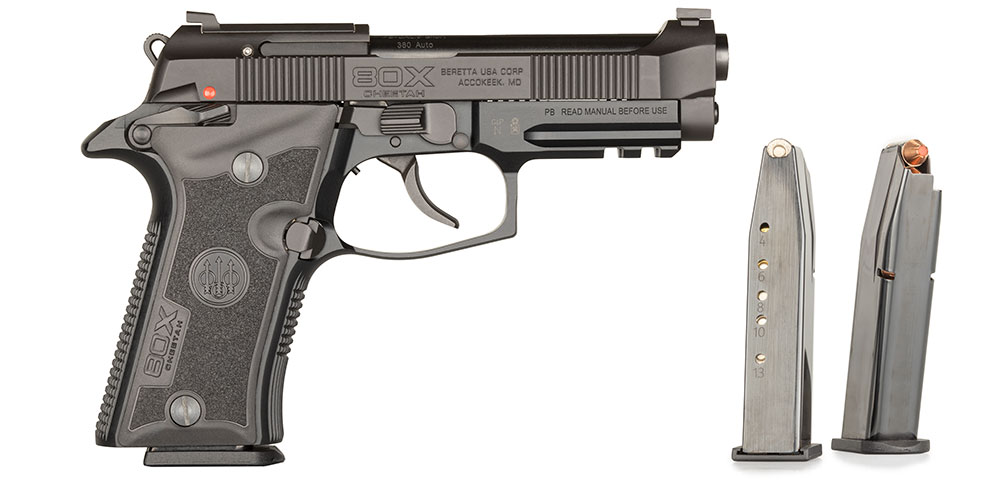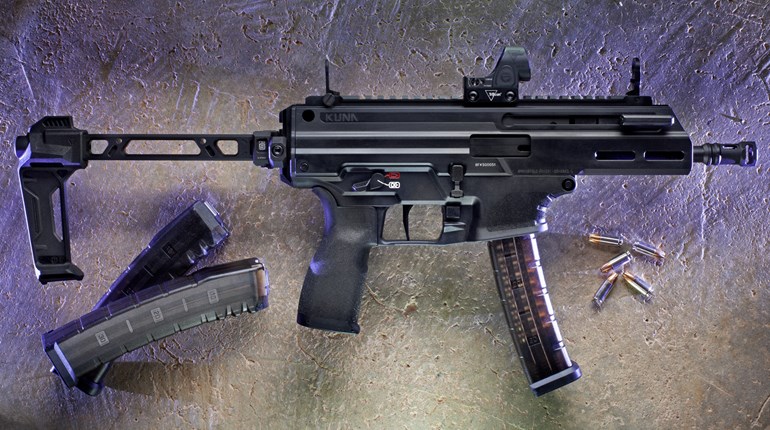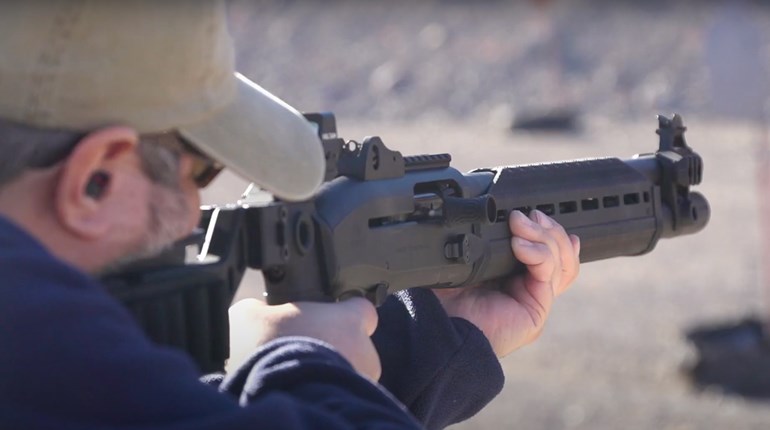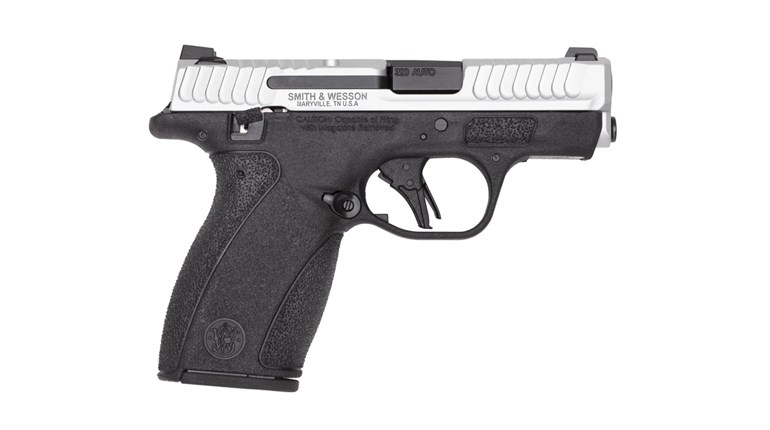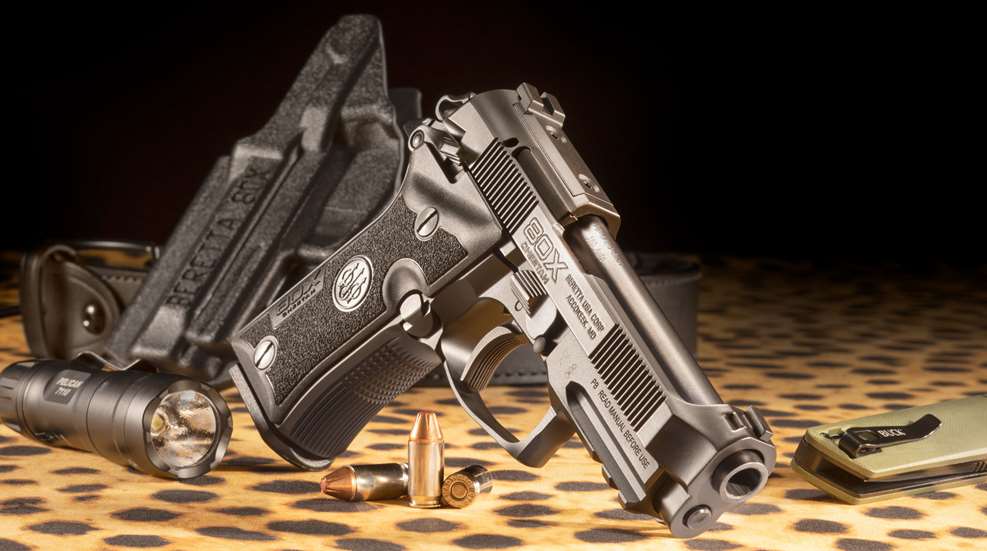
Beretta’s Cheetah always occupied a unique niche in compact-size pistols, and after a six-year production hiatus, it’s been revitalized with changes to meet the needs of contemporary shooters.
The 80X Cheetah is one of several upgraded versions of legacy pistols that Beretta released this year. Originally introduced in 1976, Cheetah variants were made in .380 ACP, .22 LR and .32 ACP chamberings. Two derivatives were also sold under different brands: the Browning BDA, which was made by Beretta and imported into the U.S. by Browning, and the FN 140DA, manufactured by FN Herstal for the European market. Initially, these pistols had only numerical model designations; Beretta added the Cheetah moniker in the mid-1990s.
The last two versions of the Cheetah were the Model 84 and Model 85 produced in 2017 and chambered in .380 ACP, differing only with respect to capacity, with the M84 holding 13+1 rounds and the M85 holding 8+1.
Six years later, the 80X Cheetah emerged as a much-evolved version of the M84, so much so that some think the pistol should carry an entirely new name and the classically styled M84 brought back into production. For other Cheetah aficionados who view the legacy models as “executive pistols,” the 80X with its Picatinny rail and rakish lines isn’t a “classic Cheetah” any more than the Vertec is a “classic Model 92.” Fair points to make, but as I soon discovered, the 80X is unquestionably a better-shooting pistol than its predecessors.
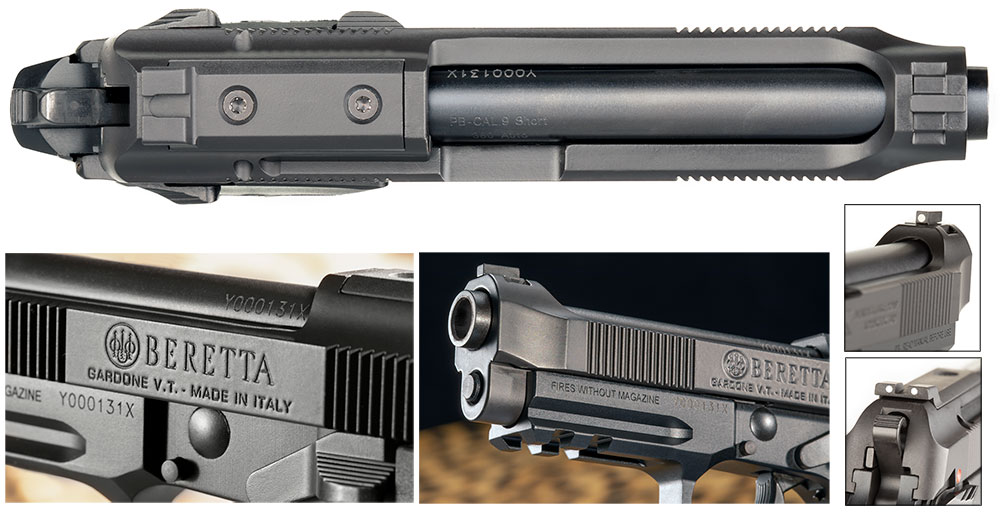
The 80X is made at Beretta’s flagship factory in Gardone, Italy, which inures a bit of cachet to this piece. It also yields the benefit of having been test fired to ensure structural strength by an independent testing company with two proof loads that generate at least 25 percent more chamber pressure than commercial ammo, something not required of domestic gunmakers.
The 80X is direct-blowback-operated, hammer-fired and feeds from a 13-round magazine. With a length of 6.8 inches and height of 4.9 inches, this .380 ACP is slightly smaller than a Glock G19 9 mm pistol. The “X” in the model name is Beretta-speak indicating that it is an advanced, upgraded version.
The trigger is DA/SA and the bilateral, frame-mounted, thumb-activated safety is a “dead-hammer decocker,” where activation decocks the hammer and disengages it from the trigger until it is placed into the fire mode. Engaging the safety also locks the slide closed. Takedown is like the Beretta M92: Remove the magazine, clear the chamber of ammo, then rotate the takedown lever to release the slide assembly.
Though the 80X’s design departs significantly from its antecedents, Beretta wisely used materials its customers expect to see in this type of pistol, namely, metallic construction. Only the grip panels and magazine follower are polymer because, for all of their advantages, polymer-frame pistols just don’t evoke the quality or pride of ownership that come with the Beretta’s more traditional Cheetah and M92 pistols. The frame is milled from a 7075-aluminum forging, then given a black anodized finish. The carbon-steel, 3.9-inch, hammer-forged barrel is blued, and the carbon-steel slide is painted with Beretta’s Aqua Tech Shield finish—a new, spray-applied and baked-on finish also used on Beretta’s APX-A1 pistol slides. Like with many painted finishes, however, the crisp Beretta markings are muted, and several people who handled the M80X preferred a nitride finish.
All rimfire semi-automatics and a dwindling number of pistols chambered in .380 ACP are blowback-operated. Direct-blowback operation pistols rely on the weight of the slide and recoil-spring strength to keep the breech closed until chamber pressure has subsided to where the cartridge case won’t rupture, or high-pressure gas vent backward during extraction.
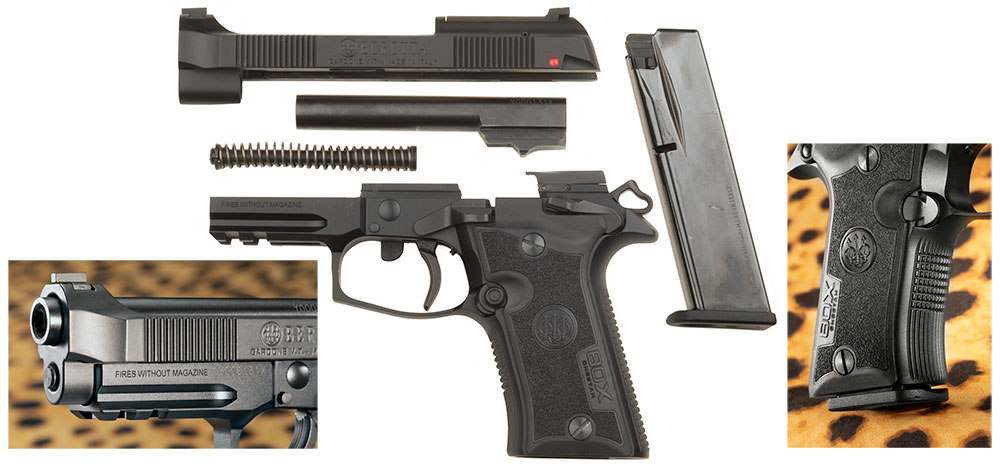
For .380-caliber pistols, there are a few practical consequences to this design. First, they aren’t micro-sized, because small slides are typically lighter, thereby requiring excessively strong recoil springs to compensate for less slide weight. Thus, the Cheetah is 6.8 inches long, while the smaller SIG Sauer P238—which employs locked-breech operation—is 5.5 inches.
Second, blowback-operated pistols have fixed barrels, which have the potential to be more accurate than those using the more prolific locked-breech design, where the barrel locks to the slide during the initial phase in the recoil cycle then unlocks by tilting downward and out of engagement with the rearward moving slide. This method requires precise machining to make the barrel-slide engagement consistent, or accuracy will suffer. Fixed-barrel pistols are also better suppressor hosts because they don’t need a booster device on the suppressor to keep the pistol cycling as do those that use the tilt-barrel locking method. Suppressors without boosters are shorter, less expensive and won’t slow down the host pistol’s cycling rate like those with boosters.
Finally, blowback-operated pistols generate more perceived recoil to the shooter, something that Beretta engineers addressed in designing the 80X.
Compared to the M84, the 80X Cheetah is functionally improved in several respects. The slide now has a removable rear-sight plate to accommodate a mini red-dot optic, and the front sight can be changed, as it is dovetail-mounted and drift-adjustable rather than integral to the slide. The slide now has serrations at both the front and the rear, and the frame has a Picatinny-style rail for mounting a flashlight, a feature arguably anachronistic and tactical-wannabe for a .380-caliber pistol.
Inspired by Beretta’s M92 Vertec pistols, the frame now has a straight backstrap with 24-lpi checkering and partial checkering on the frontstrap instead of the vertical grooves used on the curved backstrap of the M84. Though some may prefer the curved backstrap, the checkering on the 80X provides a much better grip surface.

These subtle improvements, however, are what transform this generation of Cheetah from a desk-drawer dweller into a shooting piece. The trigger was redesigned and has a lighter and smoother double-action pull weight. An easily accessible hex-head setscrew mounted in the frame adjusts overtravel and can reduce reset distance to a mere 2 mm. Though the manual specifies a trigger pull weight ranging between 6.6 to 11 pounds for double action and 3.3 to 4.4 pounds for single action, my sample measured 6.4 pounds in DA and 4.1 in SA using a Lyman electronic gauge. Older Cheetahs have DA trigger pulls weighing about 1.1 pounds more, according to the company. The trigger breaks past 90 degrees to the bore axis and the hammer is now skeletonized, which makes lock time faster. Beretta doesn’t plan to sell a kit to upgrade the trigger on legacy Cheetahs as it does with the Model 92 and its X-Treme S trigger, but it would be a sure winner if it did.
To reduce the sharper recoil impulse endemic to blowback-operated .380 ACPs, Beretta made the slide heavier and changed the recoil-spring weight. Finally, the magazine has been completely revamped to improve feeding with a new follower, spring, tube and lips. Though older magazines fit the 80X, Beretta cautions against using them when reliability is critical.
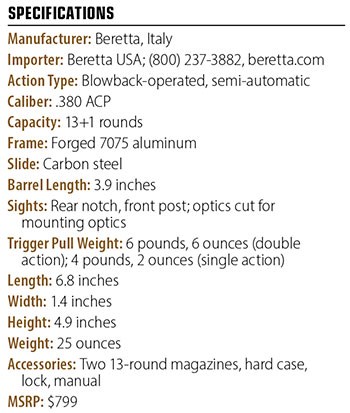 Carried over from the M84 Cheetah are the frame-mounted, bilateral safety levers, notch-and-post sights made of steel with a white dot up front and one on either side of the square notch at the rear and a reversible magazine-release button. The extractor spring has red paint which, when visible, indicates a loaded chamber, but a press check is a better way to assess the condition of the chamber.
Carried over from the M84 Cheetah are the frame-mounted, bilateral safety levers, notch-and-post sights made of steel with a white dot up front and one on either side of the square notch at the rear and a reversible magazine-release button. The extractor spring has red paint which, when visible, indicates a loaded chamber, but a press check is a better way to assess the condition of the chamber.
A few accessories are currently available from Beretta, including three holsters and three RDO sight plates that fit the Shield SMS, Noblex Quick Sight 5.0 and Holosun HE407K mini red-dot sights. However, different sights, wood grips, extended magazines and a threaded barrel are soon on the way.
To assess the 80X’s precision and ammunition preferences without the risk of sight-alignment errors, I mounted a Holosun optic and fired off a sandbag rest at 15 yards using three different loads. The average group size of all three loads was 1.45 inches, which is respectable at that distance. The iron sights were well regulated using the Winchester 95-grain load, which printed 1 inch below the point-of-aim at 9 yards, but dead-on for windage. Function testing was conducted using two additional loads and no stoppages occurred during the 300-round test.
Ergonomics of the 80X are good, but not ideal. The slide-lock lever is accessible without changing your firing grip and is wide enough to be thumb-activated to release the slide while left-handed shooters can do so using their trigger finger. The safety levers disengage with acceptable tension, but require far more pressure—and a change in grip—to engage. More significantly, the slide serrations are rounded and not adequately aggressive, though they do provide purchase to retract the slide, given their size. However, slide retraction takes less effort than the older Cheetahs, according to Beretta. On the flip side, adding serrations to the front of the slide was a smart design choice, as a mounted optical sight impedes access to those at the rear. For those who like iron sights, let’s hope Beretta offers a green fiber-optic front sight, which would be an improvement over the supplied sights with their 3-white-dot pattern.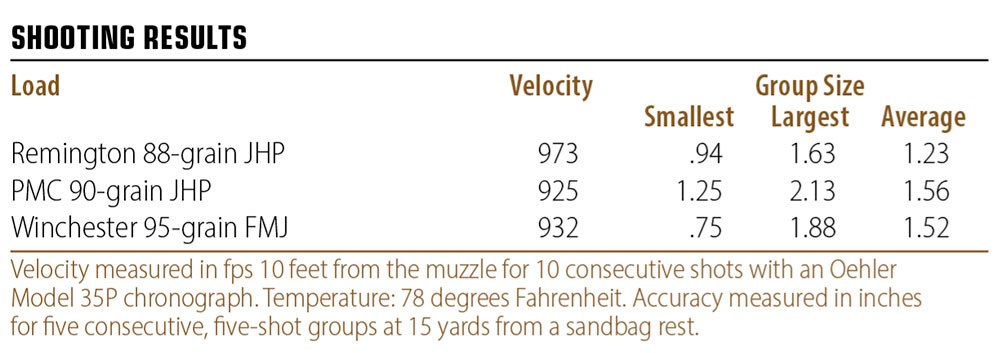
Beretta’s two major design changes to the M84 Cheetah work as intended. The trigger is among the best DA/SA triggers I’ve tested, allowing the shooter to easily place shots fired in double-action mode into a 2-inch group at 9 yards using the iron sights. That’s especially important in the context of personal protection, where the first shot, typically taken in DA mode, is the most critical. Moreover, thanks to the slide weight change, the sensation of recoil and muzzle flip is noticeably less than from the M84, making follow-up shots fast and accurate.
As a compact size, 13+1-round capacity, metal frame, DA/SA semi-automatic with a decocking safety, the 80X Cheetah is in a class by itself. Yes, the .380 ACP caliber is somewhat limiting as far as this pistol’s self-defense capabilities, but not everyone can tolerate or control 9 mm recoil enough to be effective defensive shooters. For the substantial number of people so situated, the 80X is a good solution because it is fairly easy to shoot proficiently—even in DA mode—thus diminishing the advantage of striker-fired pistols that offer lighter, consistent trigger pulls that may not suit everyone’s preference. Finally, some may prefer the 80X’s manual safety that, when applied, disconnects the hammer, allowing an extra degree of assurance in the event of a gun grab by an assailant.
